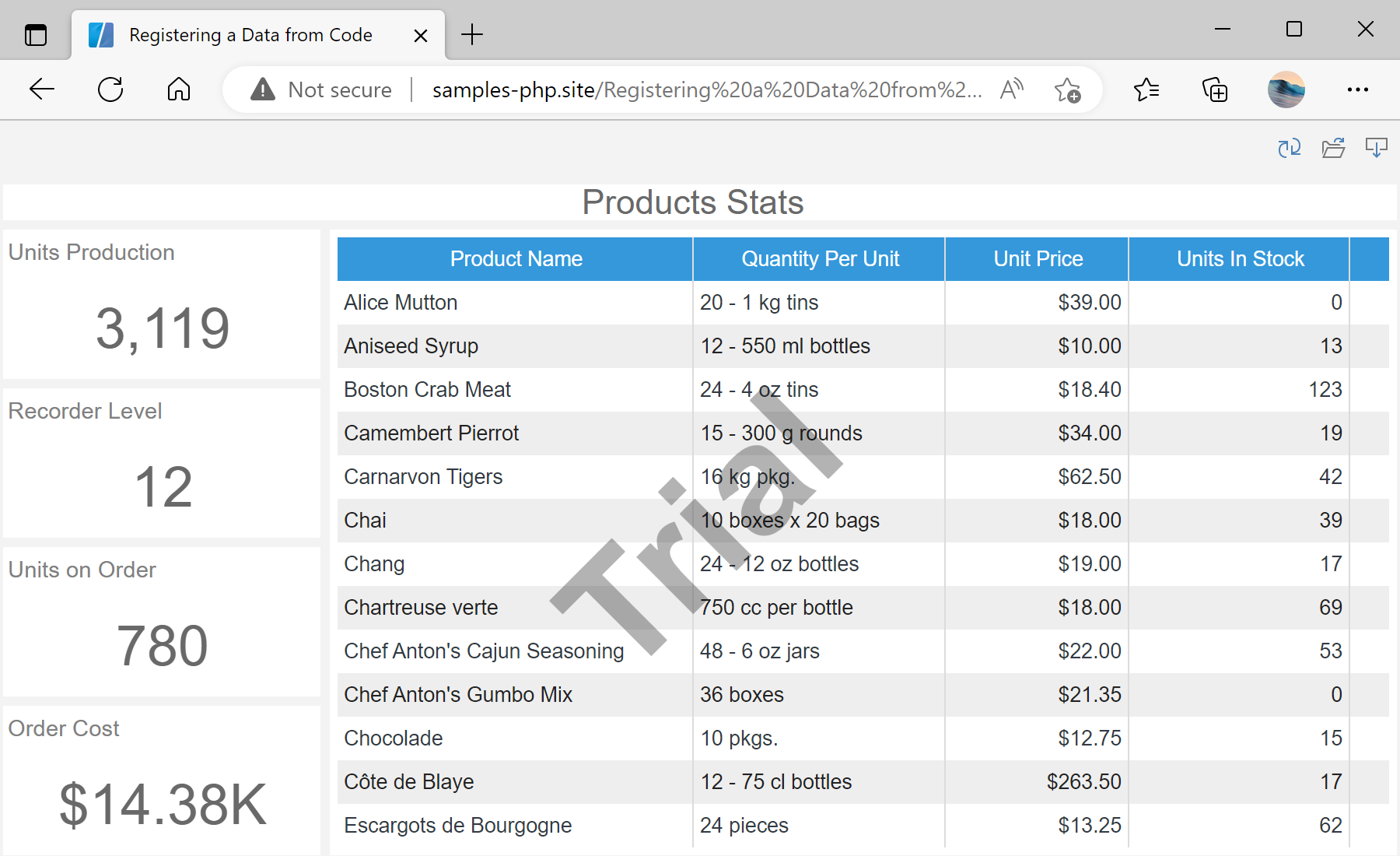This example shows how to register a dataset in a Stimulsoft Viewer for PHP before rendering a dashboard. First, include the Stimulsoft libraries:
<?php
require_once '../vendor/autoload.php';
use Stimulsoft\Report\StiReport;
use Stimulsoft\Viewer\StiViewer;
?>
Create a Viewer object and configure JavaScript options such as relative paths and height:
$viewer = new StiViewer();
$viewer->javascript->relativePath = '../';
$viewer->options->height = '800px';
Create a report object and define dashboard events. In this example,
onBeforeRender is used to register the data before the dashboard is built:
$report = new StiReport();
$report->onBeforeRender = 'onBeforeRender';
Process the viewer request on the server side using
process():
$viewer->process();
Load the dashboard template using
loadFile() and assign it to the viewer:
$report->loadFile('../reports/ProductStats.mrt');
$viewer->report = $report;
Render the necessary JavaScript code for the viewer on the client side using
renderHtml():
<?php
$viewer->javascript->renderHtml();
?>
Define the
onBeforeRender JavaScript function to create and register a dataset before building the dashboard:
function onBeforeRender(args) {
let dataSet = new Stimulsoft.System.Data.DataSet("Demo");
// Loading XSD schema file
dataSet.readXmlSchemaFile("../data/Demo.xsd");
// Loading XML data file
dataSet.readXmlFile("../data/Demo.xml");
// Optional: Loading JSON data instead of XML
//dataSet.readJsonFile("../data/Demo.json");
// Removing all connections from the dashboard template
args.report.dictionary.databases.clear();
// Registering the DataSet
args.report.regData("Demo", "Demo", dataSet);
}
Finally, render the visual part of the viewer in the HTML body using
renderHtml():
<?php
$viewer->renderHtml();
?>
Auf dem Screenshot unten Sie können das Ergebnis des Beispiel-Codes ansehen:
